The History of T-Shirts
T-shirts, one of the most ubiquitous pieces of clothing in the modern wardrobe, have an intriguing history that spans centuries. Originally conceived as a functional undergarment, the T-shirt has transformed into a powerful symbol of personal expression, cultural identity, and fashion. Today, T-shirts are worn by people of all ages and backgrounds, and they play a significant role in various subcultures and fashion movements around the world.
Significance of T-Shirts in Modern Fashion

In contemporary fashion, T-shirts are more than just a piece of clothing; they are a canvas for creativity and communication. Whether it’s a plain white tee, a band shirt, or a designer creation, T-shirts serve as a medium for expressing one’s personality, beliefs, and affiliations. The simplicity and versatility of T-shirts make them a staple in every wardrobe, from high-end fashion collections to everyday casual wear.
Ancient Beginnings
Early Forms of Undergarments
The concept of wearing a garment close to the skin dates back to ancient times. Early civilizations, such as the Egyptians and Romans, utilized linen tunics and similar garments for comfort and hygiene. These early undergarments were designed to protect outerwear from sweat and oils, much like the function of modern-day T-shirts.
T-Shirts’ Ancient Ancestors
While the modern T-shirt as we know it didn’t exist in ancient times, its ancestors can be traced back to simple, tunic-like garments. The Romans wore a garment called the “tunica,” which was a basic, T-shaped piece of cloth. This tunic provided the foundation for what would eventually evolve into the contemporary T-shirt, illustrating that the desire for a comfortable, practical undergarment has long been a part of human history.
The Birth of the Modern T-Shirt
Development in the Late 19th Century
The modern T-shirt began to take shape in the late 19th century. During this period, technological advancements in textile manufacturing made it possible to produce lightweight, comfortable clothing. The T-shirt, initially designed as an undergarment for men, became popular due to its practicality and ease of wear. The invention of new knitting machines allowed for the mass production of these garments, making them widely available and affordable.
Influence of Industrialization
The industrial revolution played a crucial role in the development of the T-shirt. As factories began to produce clothing on a large scale, the T-shirt emerged as a standard item in the working man’s wardrobe. The simplicity of the T-shirt made it an ideal garment for laborers who needed durable, comfortable clothing that allowed for a full range of motion. This era marked the beginning of the T-shirt’s journey from a utilitarian garment to a fashion staple.
T-Shirts in the Early 20th Century
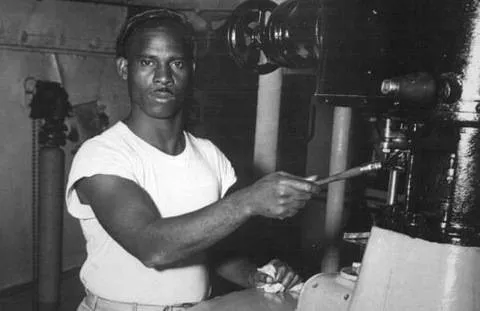
Adoption by the U.S. Navy
The T-shirt gained widespread recognition in the early 20th century when the U.S. Navy adopted it as part of its standard-issue uniform. Sailors wore T-shirts as a lightweight, breathable layer under their uniforms. This military adoption helped popularize the T-shirt among civilians, who appreciated its comfort and practicality. By the 1920s, the T-shirt had become a common sight in American menswear.
Popularity Among Working-Class Men
During the 1930s and 1940s, the T-shirt became a symbol of the American working class. It was inexpensive, easy to clean, and durable, making it an ideal choice for laborers, farmers, and factory workers. The T-shirt’s association with hard work and rugged masculinity contributed to its growing popularity. This period laid the groundwork for the T-shirt’s eventual rise as a cultural icon.
T-Shirts in World War II
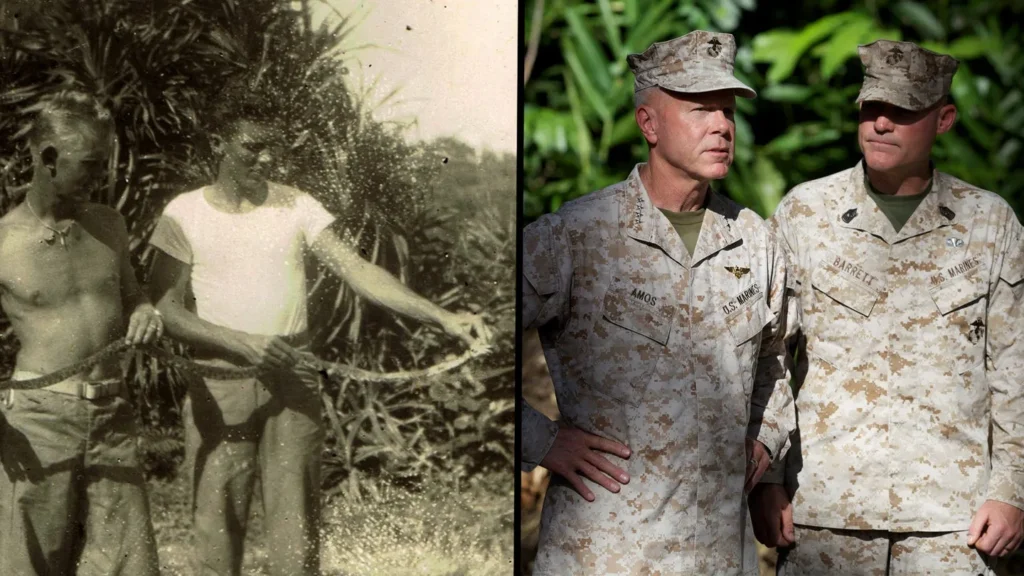
Military Use and Standardization
World War II was a pivotal moment in the history of the T-shirt. The U.S. military standardized the T-shirt as part of the uniform for all branches of the armed forces. Soldiers wore T-shirts as an underlayer beneath their uniforms, and the practicality of this garment was quickly recognized. The widespread use of T-shirts by servicemen during the war played a significant role in their post-war popularity.
Post-War Influence on Civilian Clothing
After the war, returning soldiers continued to wear their T-shirts, introducing them to civilian life. The T-shirt’s practicality and comfort made it a popular choice for casual wear. This transition from military to civilian clothing marked a significant step in the T-shirt’s evolution from an undergarment to a standalone fashion item. The post-war era saw the T-shirt become a staple in American wardrobes, setting the stage for its cultural explosion in the decades to come.
The 1950s: A Cultural Icon Emerges
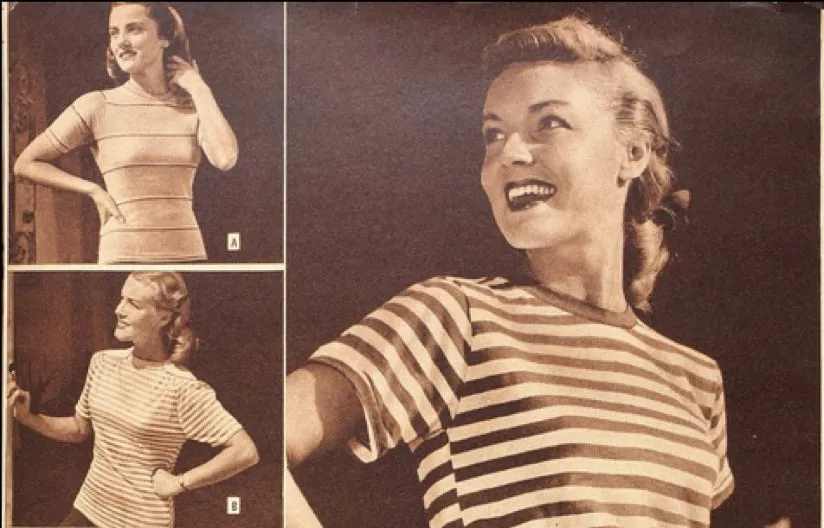
Influence of Hollywood and Celebrities
The 1950s marked the T-shirt’s transformation into a cultural icon, thanks in large part to Hollywood. Movies like “A Streetcar Named Desire” and “Rebel Without a Cause” featured leading men such as Marlon Brando and James Dean wearing T-shirts, which helped to redefine the garment’s image. No longer just an undergarment, the T-shirt became a symbol of youthful rebellion and nonconformity.
The Rise of the Rebel Image
The T-shirt’s association with rebellious youth culture solidified its place in fashion history. Teenagers and young adults adopted the T-shirt as a way to express their individuality and defiance against traditional norms. This era also saw the introduction of the white T-shirt as a fashion statement, a trend that would continue to evolve in the decades to come. The T-shirt’s versatility and simplicity made it the perfect canvas for personal expression and a key component of the burgeoning youth culture.
The 1960s: A Canvas for Expression
T-Shirts as a Medium for Protest and Art
The 1960s were a time of social and political upheaval, and the T-shirt became a powerful tool for expression. Activists and artists used T-shirts to convey messages about civil rights, anti-war sentiments, and other social issues. The simplicity of the T-shirt made it an ideal medium for printing slogans, artwork, and political statements. This decade saw the birth of the graphic T-shirt, transforming the garment into a walking billboard for personal beliefs and artistic expression.
The Birth of the Graphic T-Shirt
The graphic T-shirt, featuring designs, logos, and messages, became increasingly popular during the 1960s. This new form of T-shirt allowed individuals to showcase their personalities, affiliations, and passions. Bands, brands, and causes all embraced the graphic T-shirt as a way to connect with their audiences. The era’s creativity and experimentation with fashion helped cement the graphic T-shirt as a permanent fixture in the world of apparel.
The 1970s: T-Shirts in Pop Culture
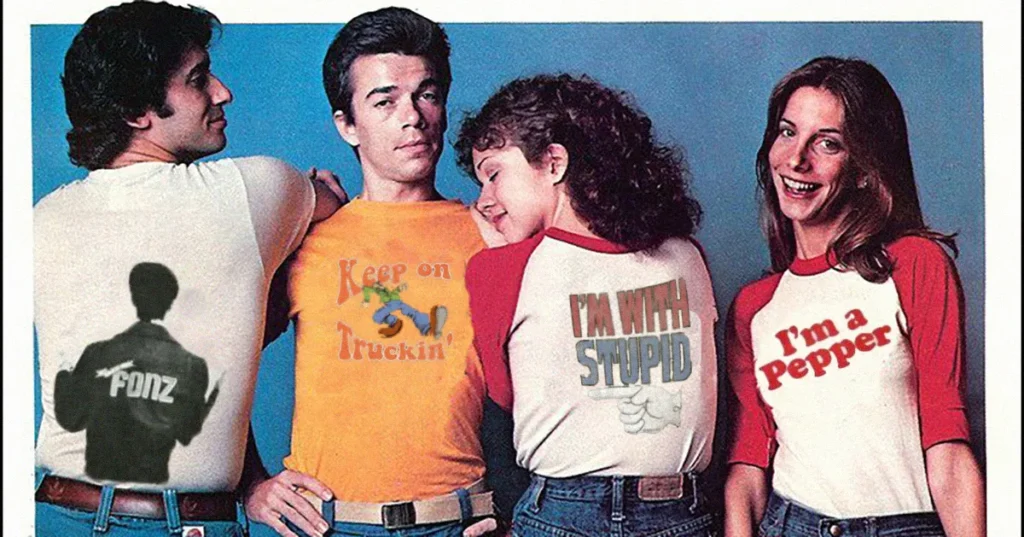
Music and Band T-Shirts
The 1970s saw the T-shirt become a key element of pop culture, particularly within the music scene. Bands and musicians used T-shirts as merchandise to promote their albums and tours. Iconic band T-shirts from groups like The Rolling Stones, Led Zeppelin, and Pink Floyd became symbols of fan loyalty and musical identity. This era established the T-shirt as an essential part of music fandom and popular culture.
Surf and Skate Culture
Surf and skate culture also played a significant role in the evolution of the T-shirt during the 1970s. Brands like Ocean Pacific and Hang Ten popularized T-shirts adorned with bold graphics and vibrant colors. These T-shirts reflected the laid-back, adventurous spirit of the surf and skate communities, influencing broader fashion trends. The T-shirt’s association with these subcultures further cemented its place as a versatile and culturally significant garment.
The 1980s: The Rise of Branding
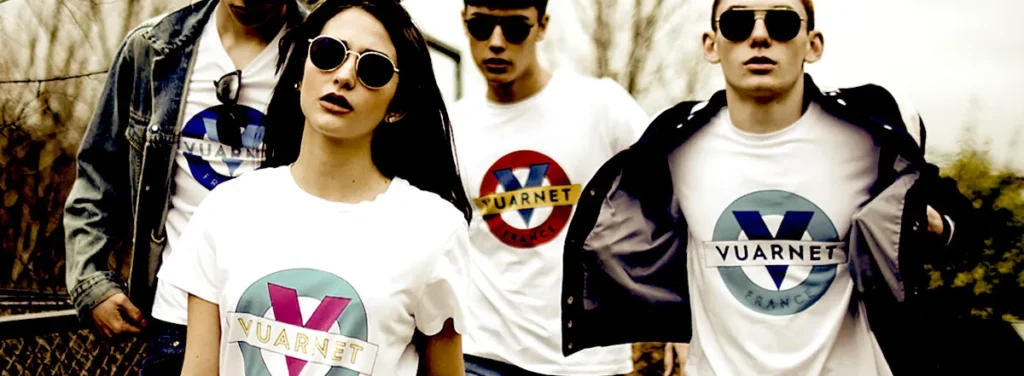
T-Shirts as Advertising Tools
The 1980s marked a shift in the T-shirt’s role from personal expression to commercial advertising. Companies recognized the potential of T-shirts as walking billboards and began using them to promote their brands. Corporate logos, slogans, and brand names adorned T-shirts, turning them into powerful marketing tools. This era saw the rise of branded T-shirts, with companies like Coca-Cola, Nike, and Calvin Klein leading the way.
The Influence of Corporate Culture
As corporate culture permeated everyday life, T-shirts became a means of expressing brand loyalty and identity. The prevalence of branded T-shirts in the 1980s reflected broader societal trends, including consumerism and the growing influence of multinational corporations. This period also saw the emergence of designer T-shirts, where high-end fashion brands introduced their own takes on the classic T-shirt, blending luxury with casual wear.
The 1990s: A Fashion Staple

T-Shirts in High Fashion
The 1990s brought the T-shirt into the realm of high fashion. Designers like Gianni Versace, Jean-Paul Gaultier, and Vivienne Westwood incorporated T-shirts into their collections, elevating the garment’s status. The fusion of streetwear and haute couture resulted in innovative designs that challenged traditional fashion norms. T-shirts became a key element in the grunge movement, characterized by its laid-back, rebellious aesthetic.
The Grunge Movement and Minimalism
The grunge movement, led by bands like Nirvana and Pearl Jam, embraced the T-shirt as a symbol of anti-fashion. Flannel shirts, ripped jeans, and graphic T-shirts defined the grunge look, which rejected the polished, glamorous styles of the previous decade. Minimalism also gained traction in the 1990s, with simple, understated T-shirts becoming a staple in many wardrobes. The decade’s fashion trends underscored the T-shirt’s versatility and enduring appeal.
The 2000s: The Era of Customization

Digital Printing Revolution
The advent of digital printing technology in the 2000s revolutionized the T-shirt industry. Custom T-shirts became widely accessible, allowing individuals to create personalized designs with ease. Websites like CafePress and Zazzle enabled users to design and order custom T-shirts online, democratizing fashion and fostering a culture of self-expression. The digital printing revolution transformed the T-shirt into a customizable canvas, reflecting personal tastes and creativity.
The Rise of Personalized T-Shirts
Personalized T-shirts gained immense popularity during the 2000s. Whether for special events, corporate branding, or personal use, custom T-shirts became a popular choice for expressing individuality. This era also saw the rise of T-shirt businesses that catered to niche markets, offering unique designs that resonated with specific audiences. The ability to personalize T-shirts further cemented their status as a versatile and essential garment in modern fashion.
The 2010s: T-Shirts in the Age of Social Media
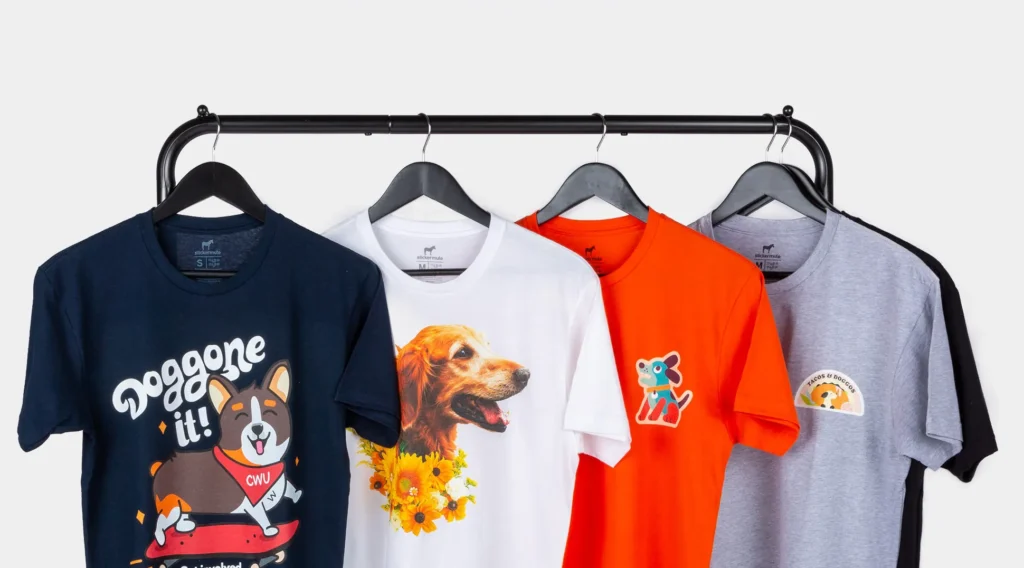
Viral Trends and Memes
The rise of social media in the 2010s had a profound impact on T-shirt culture. Viral trends and memes found their way onto T-shirts, allowing people to wear their online identities and humor. Platforms like Instagram and TikTok popularized T-shirt designs, turning them into viral sensations. The instant sharing and global reach of social media amplified the impact of T-shirt trends, making them a dynamic and rapidly evolving aspect of fashion.
Ethical and Sustainable Fashion
As awareness of environmental and ethical issues grew, the T-shirt industry began to shift towards more sustainable practices. Brands started using organic cotton, recycled materials, and eco-friendly dyes to produce T-shirts. The rise of ethical fashion also emphasized fair labor practices and transparency in the supply chain. This movement towards sustainability reflected a broader trend in the fashion industry, where consumers increasingly demanded responsible and ethical products.
The 2020s: The Future of T-Shirts

Technological Innovations
The 2020s are poised to bring further innovations to the T-shirt industry. Advances in fabric technology, such as moisture-wicking and antimicrobial materials, are enhancing the functionality and comfort of T-shirts. Smart textiles, embedded with sensors and electronics, are also on the horizon, promising to integrate technology seamlessly into everyday clothing. These innovations will likely expand the possibilities for T-shirts, making them even more versatile and adaptable.
Continued Cultural Significance
The cultural significance of T-shirts shows no signs of waning. As a medium for self-expression, social commentary, and artistic creativity, T-shirts remain a powerful tool for communication. The ongoing evolution of fashion trends, combined with technological advancements, ensures that T-shirts will continue to play a vital role in our wardrobes. Their enduring appeal lies in their simplicity, versatility, and ability to adapt to changing times and tastes.
Conclusion
Summary of T-Shirt Evolution
From their humble beginnings as undergarments to their status as a global fashion staple, T-shirts have undergone a remarkable evolution. Each decade has seen the T-shirt adapt and transform, reflecting broader societal changes and cultural shifts. Whether as a symbol of rebellion, a canvas for art, or a tool for branding, T-shirts have consistently captured the spirit of the times.
T-Shirts’ Enduring Legacy
The enduring legacy of T-shirts lies in their ability to transcend boundaries and connect people across different cultures and backgrounds. They are a testament to the power of simplicity and the enduring human desire for comfort and self-expression. As we look to the future, the T-shirt will undoubtedly continue to evolve, remaining a timeless and essential part of our lives.
